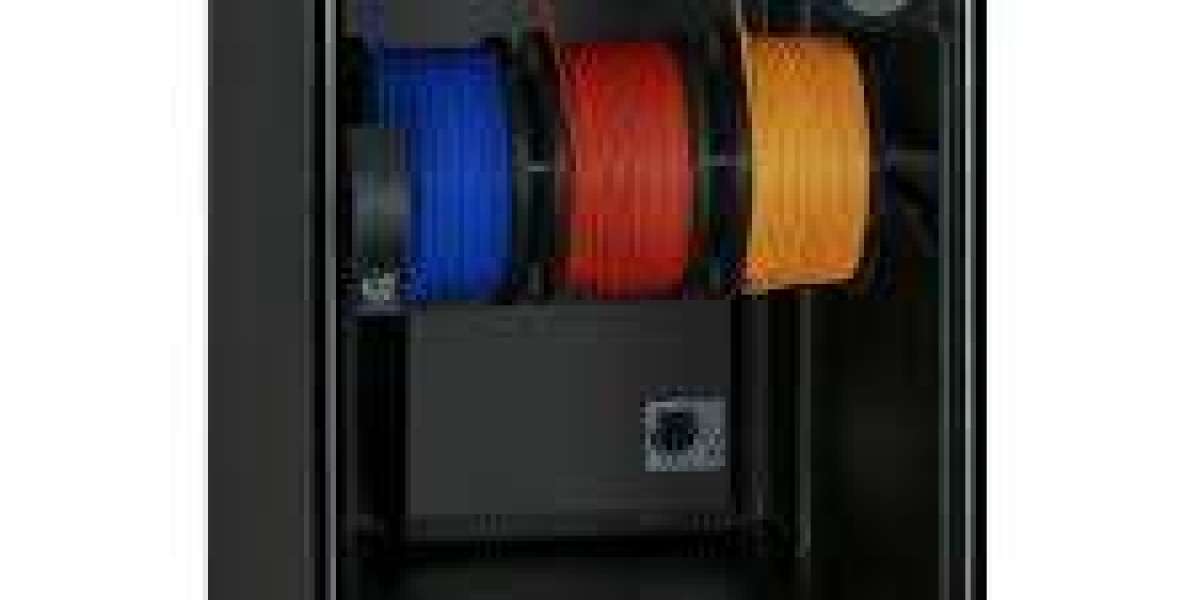Many popular filaments, including PLA, ABS, PETG, and nylon, are hygroscopic, meaning they absorb moisture from the environment. Moist filament leads to a range of issues such as poor layer adhesion, inconsistent extrusion, stringing, and even failed prints. For 3D printing enthusiasts and professionals alike, filament dryer have become essential tools to ensure optimal printing performance. Among these dryers, systems equipped with automatic humidity monitoring stand out for their significant benefits. Let’s explore why.
Enhanced Print Quality and Consistency
The presence of moisture in filament material can cause uneven extrusion, which results in surface imperfections, weak layer bonding, and poor overall print quality. Automatic humidity monitoring systems help maintain a constant low-humidity environment around the filament by actively measuring and adjusting moisture levels in real-time. This ensures that filaments remain dry and perform consistently, leading to precise, high-quality prints every time.
Real-Time Feedback and Control
An automatic humidity monitoring system provides continuous real-time feedback on moisture levels inside the filament dryer. This visibility allows users to react quickly to any changes in humidity. Advanced systems may even include alerts or notifications if moisture levels exceed a predefined threshold, providing peace of mind that your filament is being stored under optimal conditions.
By maintaining strict humidity control, users can prevent the degradation of filament properties, ultimately reducing print errors and material wastage. This level of control is especially beneficial for high-performance and specialty filaments, which are more sensitive to moisture exposure.
Increased Filament Lifespan
Exposure to high humidity can degrade the physical and chemical properties of filaments over time, rendering them unusable. Automatic humidity monitoring systems play a critical role in protecting filament materials. By continuously adjusting the drying environment, these systems prevent the filament from absorbing moisture. This extends the filament’s shelf life and reduces the frequency with which materials must be discarded due to moisture damage, resulting in cost savings for the user.
Energy Efficiency
Traditional filament dryers operate by maintaining heat for extended periods, even if the environment does not require intense drying. Automatic humidity monitoring systems optimize energy usage by only adjusting drying intensity when necessary. If moisture levels are within acceptable ranges, the system can reduce energy consumption, which benefits both the environment and your wallet. This efficiency reduces overall power consumption, making the drying process more sustainable and economical.
Reduced Manual Intervention
Without automatic monitoring, users must manually check and maintain humidity levels, which can be time-consuming and prone to human error. Automatic humidity monitoring systems eliminate this need for frequent manual checks. By automating moisture regulation, users can focus more on their printing projects and less on monitoring filament conditions. This convenience is particularly advantageous for those managing large-scale printing operations or complex projects where time and attention are critical.
Optimal Performance for Hygroscopic Filaments
Certain filaments, such as nylon, PVA, and flexible TPU, are extremely sensitive to moisture. For these materials, maintaining precise humidity levels is paramount to achieving optimal performance. Automatic monitoring systems ensure a stable and moisture-free environment tailored to the specific needs of these filaments. As a result, users experience fewer issues, such as bubbling, cracking, or brittleness during printing.
User-Friendly Interfaces and Data Insights
Many modern filament dryers with automatic humidity monitoring systems come equipped with user-friendly interfaces and data-tracking capabilities. Users can view historical data, monitor trends, and fine-tune settings based on specific needs. This data-driven approach enables users to make informed decisions about filament storage and drying practices, further enhancing print quality and material management.
Conclusion
Automatic humidity monitoring systems for filament dryers offer a host of benefits, from improved print quality and consistent performance to energy savings and reduced manual labor. For hobbyists and professionals who demand the best from their 3D printing materials, investing in a dryer with automatic humidity monitoring is a smart choice. Not only does it preserve the integrity of filaments, but it also ensures a smooth and worry-free printing experience, ultimately saving time, money, and frustration.







